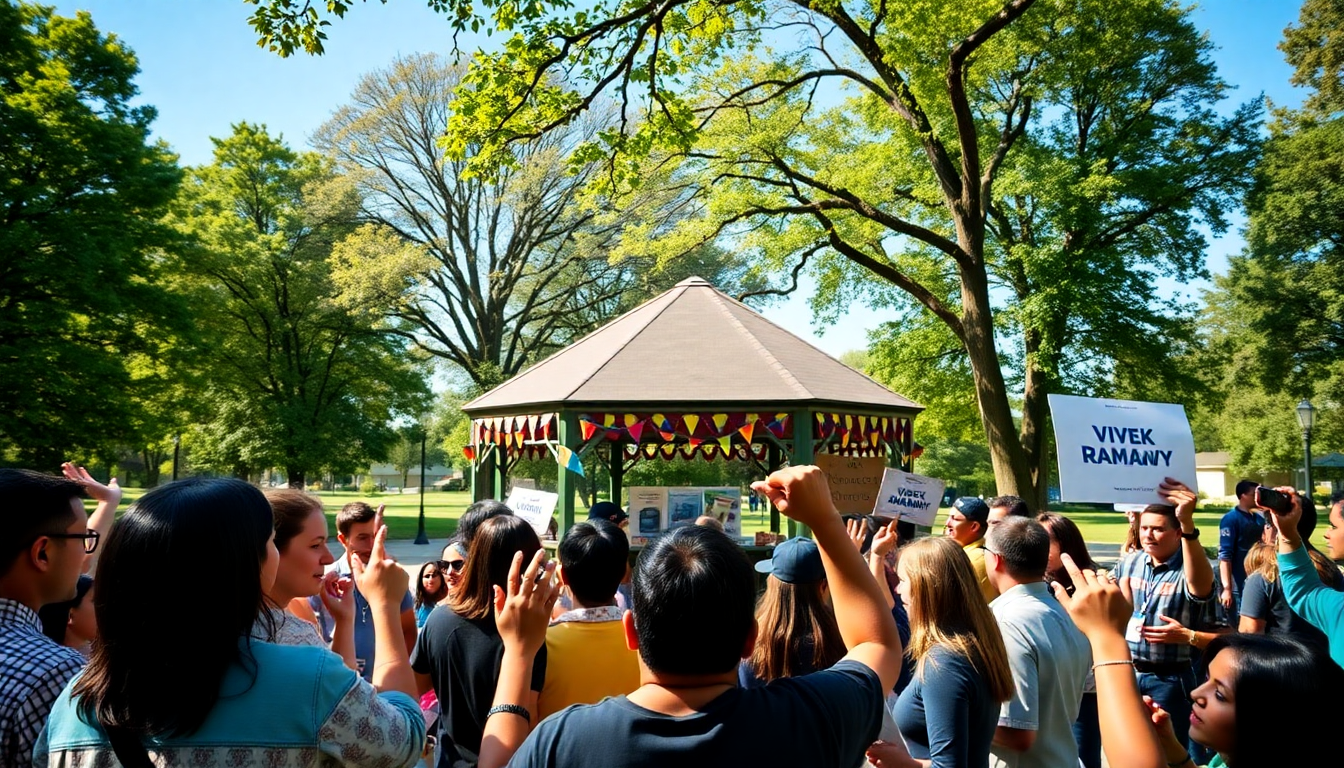Table of Contents
As the gubernatorial race heats up in Ohio, candidates are stepping forward with bold strategies and significant financial backing. Among them, Vivek Ramaswamy, a multimillionaire entrepreneur turned political candidate, stands out in this competitive landscape. His approach combines substantial personal investment with a clear vision for the state’s future, aiming to unite a diverse coalition of supporters across the political spectrum. But what exactly makes his campaign tick?
Financial Commitment and Campaign Strategy
Vivek Ramaswamy is not just talking the talk; he’s walking the walk when it comes to funding his campaign for Ohio governor. Having already poured over $30 million into his pursuit of the 2024 GOP presidential nomination, he’s ready to allocate a similar or even greater amount for his gubernatorial campaign. In a recent interview, Ramaswamy emphasized the importance of resources in securing a victory, stating, “Losing this race is not an option. Winning is the only option, and we’re going to win it.”
This strong financial footing has already shown results. His campaign recently announced a remarkable fundraising achievement, raking in nearly $10 million in just four months since he declared his candidacy. This figure isn’t just impressive; it sets a record for the highest first-quarter fundraising total in Ohio’s state history. Ramaswamy interprets this success as a clear indicator of unprecedented support within Ohio—could it be a powerful signal of unity among voters?
Endorsed by former President Donald Trump, Ramaswamy stands as the primary Republican candidate to succeed term-limited Governor Mike DeWine. He’s positioning himself strategically to capture the GOP base in a state that has leaned Republican in recent years. But he doesn’t stop there; his campaign is also focused on attracting a growing number of nontraditional supporters, including younger individuals and entrepreneurs. This multifaceted approach aims to foster a sense of unity among various demographics within the state, but will it resonate enough to secure him a win?
Addressing the Political Landscape
The political landscape in Ohio is evolving, and Ramaswamy is navigating potential challengers and the dynamics of the Democratic opposition. Initially, he faced competition from State Attorney General Dave Yost, who ultimately withdrew from the race. However, other Democratic candidates are still on the horizon. Notably, former Ohio Department of Health Director Amy Acton and ex-Senator Sherrod Brown are considered potential contenders that could significantly shape the race.
Despite these challenges, Ramaswamy remains undeterred by the prospect of a competitive primary. When asked about his concerns, he boldly declared, “None, zero.” He expresses respect for potential opponents, particularly Jim Tressel, the former Ohio State University football coach, viewing him as an asset to the state’s political climate. Ramaswamy emphasizes that unity and collective ambition are key to Ohio’s success, but is he prepared for the challenges that lie ahead?
In stark contrast to the Republican primary, the Democratic side appears less organized, which Ramaswamy sees as an advantage. He relishes the opportunity for his party to run unopposed while inviting a competitive primary among Democrats. As he clarifies, the essence of his campaign isn’t solely about the opponents he faces but rather the vision he aims to realize for Ohio’s future. But can a campaign focused on vision alone secure the votes he needs?
Focus on Educational Achievement
One of Ramaswamy’s core campaign pillars is addressing the educational achievement crisis in Ohio. He believes that enhancing educational standards is crucial for the state’s growth and competitiveness. This issue resonates across political lines, making it a central theme in his outreach efforts. Ramaswamy asserts that families and young graduates alike recognize the importance of turning around the educational landscape to secure Ohio’s standing as a leading state in the nation. But how can he translate this recognition into action?
He aims to make Ohio a model for educational reform, encouraging parents and educators to join forces in pursuing excellence. Ramaswamy’s commitment to this cause reflects a broader understanding of the interconnectedness of education, economic opportunity, and the future of the state. He believes that by elevating educational standards, Ohio can reclaim its status as a leader in innovation and prosperity. Is this vision ambitious enough to inspire real change?
As Ramaswamy’s campaign progresses, he remains focused on these key strategies, leveraging his financial backing and political endorsements while advocating for educational reform as a cornerstone of his governance vision. With the 2026 gubernatorial election on the horizon, all eyes will be on how he navigates the challenges ahead and realizes his ambitious plans for Ohio. Will he rise to the occasion?


